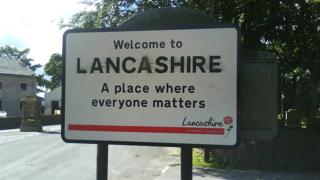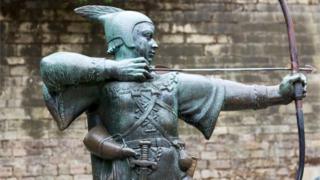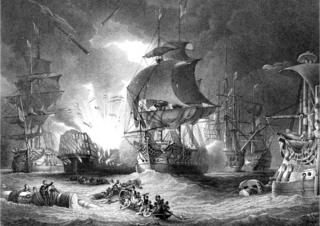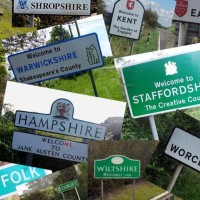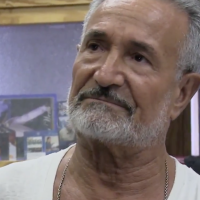It was the most daring rescue mission of a generation, with a cast that included three future prime ministers, Idi Amin and more than 100 hostages. How did it change modern Israel? The men and women who were there look back

On 4 July 1976, the day the US celebrated its 200th birthday, an Israeli expat took a phone call that would change his life. A student in Cambridge, Massachusetts, he went by the name Ben Nitay, an Americanised shortening of the original, the better to fit into the land where he hoped to forge a business career and build a life. On the phone was his younger brother, calling with grave news. It concerned their older brother Yonatan, or Yoni. As children, they had idolised him; he was the one who led their games, who, they felt, had raised them. Then 30 years old, ruggedly handsome and newly installed as the head of Israels elite Sayeret Matkal commando unit, Yoni had, in the early hours of that day, led a raid to rescue more than 100 Israeli hostages held at Entebbe, Uganda. Word had just come that the operation had been an astonishing success and the hostages were free. But the leader on the ground Yoni had been killed in action. Their brother was dead.
And so, while the people around him watched marching bands and held street parties to mark Americas bicentennial, and while the world marvelled at the sheer audacity of a military raid that defied all odds, Ben Nitay born Binyamin Netanyahu made the seven-hour drive to Cornell University in Ithaca, New York, where his father was teaching. The 26-year-old was determined to break the news to his parents himself.
I walked up the path leading to their house which had a big window in the front, he recalls 40 years later, sitting in the office of the Israeli prime minister which has been his, on and off, for 10 of the last 20 years. I could see my father pacing back and forth. And all of a sudden he turned his head and saw me. He had a look of surprise, but he immediately understood and let out a sharp cry. And then I walked in. Netanyahu pauses as he relives the moment. This was even harder than Yonis death: telling my father and mother.
The family flew in virtual silence from the US to Israel for the funeral of the son and brother who had already been garlanded as a military hero and was now about to enter the national mythology. The Netanyahu name would take its place in the Israeli pantheon and, in the process, open up a path that would take young Binyamin to the top of Israeli politics a path that began in Entebbe.
The career of Netanyahu is the most visible legacy of that July day four decades ago, but the impact of Entebbe would be felt in countless other ways, too. With its extraordinary cast of characters including a trio of future Israeli prime ministers as well as the gargantuan, volatile Ugandan dictator Idi Amin Entebbe would alter the calculus in the conflict between Israel and the Palestinians, changing the way Israel saw itself and was seen by others. It would come to seem a high watermark in global attitudes to the country, perhaps the last time Israel was viewed with admiration rather than suspicion or hostility. Entebbe would become a byword for military daring, the subject of three blockbuster movies, taught and studied by armies around the world including by the architects of the raid that captured and killed Osama bin Laden. A raid that lasted a total of 99 minutes would live on for decades.
***
It began on Sunday 27 June with a routine Air France flight from Tel Aviv to Paris, carrying 247 passengers and 12 crew. The plane made a planned stop in Athens, but within a few minutes of takeoff from Greece, trouble struck. We heard shouting coming from the cabin, the planes captain, Michel Bacos, now 92, recalls. He sent his chief engineer to find out what was going on. He opened the cockpit door and found himself face to face with Wilfried Bse, armed with a revolver and a hand grenade.
Bse and his female comrade were part of a German faction known as Revolutionary Cells, or RZ, one of several urban guerrilla groups active in the era of the Baader-Meinhof gang. They had teamed up with two members of a breakaway faction of the Popular Front for the Liberation of Palestine. Together, the four had boarded flight 139 at Athens, where security was notoriously lax. Bse shoved his way into the cockpit, threw out the co-pilot and, grabbing the microphone, announced that the plane would now be called Haifa 1, taking its name from the city in the north of the country the passengers called Israel and the hijackers called Palestine. Their demand was the release of 53 prisoners held in five different countries.
Even before they heard the announcement, in a heavy German accent, some of the passengers knew something was up. At the back of the plane, Sara Davidson a nervous flyer anyway had anxiously clocked the air stewardess emerging from the first class cabin, her face a ghostly white. This was meant to be the holiday of a lifetime, a trip to America to celebrate the bar mitzvah of her 13-year-old son Benny. But now Sara turned to her husband, a navigator with the Israeli air force, and told him she feared theyd been hijacked.
It wasnt such an outlandish thought. At that time, hijackings were frequent, a staple of nightly news bulletins. In 1972, there was one hijacking a month. For Palestinians, they had been a favoured tactic since the late 1960s, initially targeting jets of the Israeli national airline, El Al. Besides the ritual demands for the release of prisoners, hijackings were seen as a swift and powerful way to win publicity for what was then the emerging cause of Palestinian independence. Still, Saras husband laughed off her suggestion: You and your frightening ideas. Everything is OK. A minute later it was clear who was right.
Following Bses orders, Bacos flew the plane to Benghazi, Libya. He warned me not to break the landing gear: wed need to be able to take off again.
The Libyan stop was brief, just long enough for a British-born woman, Patricia Martel, to pretend she was having a miscarriage and get herself released from the plane. She had emigrated to Israel a few years earlier and was newly married; her mother had just died and she was en route to Manchester to visit her father. Not only was the miscarriage a fake, Martel wasnt even pregnant. But she was a nurse and a good actor.
Bacos was ordered to take off again. He asked Bse where: He says, Its none of your business.
The plane flew for hours, long enough for Benny to lie on the floor and sleep. So many hours we flew and flew, and we didnt know where to, Sara Davidson told me. The passengers tried to guess. Was their destination Siberia? China?
Eventually the plane touched down. Davidson and the others were allowed to open the window shutters and there on the tarmac stood the instantly recognisable, internationally notorious figure of Idi Amin, in camouflage battle fatigues. Only then did they realise that they were in Uganda. They were escorted off the plane and into the old terminal building of Entebbe airport.
They were no longer passengers. Now they were hostages.
***
Back in Israel, military planners were trying to assemble what they knew which was not much. At his desk in military intelligence sat the officer in charge of planning for missions of this kind, the former elite commando, and future prime minister, Ehud Barak. He had direct experience of rescue operations but this situation was infinitely more complex, chiefly because of the location.
The military brass gathered in a Tel Aviv conference room, adorned by an enormous globe. One general began turning it slowly before asking a colleague, Are you really sure you know where Entebbe is? As Barak told me recently in his office in Tel Aviv, We were in total blindness.
They worked through the night, assembling fragments of information. In the preceding years, Israel had forged alliances with several African states, Uganda among them. Amin himself had received military training from the Israelis; fighting for space among the medals on his enormous chest were the wings of the Israeli air force.
The officers who had trained Amin came in to be debriefed. They offered the nugget that he coveted the Nobel peace prize. Someone attempted to pass the message to Kampala that if Amin brokered a peaceful resolution of the crisis, the Nobel might be his. Meanwhile, an engineer at an Israeli company that had tendered to build the new terminal at Entebbe airport came forward: he happened to have, stashed in his desk drawer, the plans of the old building in which the passengers were now held hostage. Barak and his team soon spread out the blueprints, studying the target.
Originally, they imagined their sole adversary would be the four hijackers (information on whom had been helpfully provided by Martel, the woman who had faked a miscarriage). But it was now clear Entebbe had not been chosen by accident: Amin and his regime were colluding with the hijackers. Israels plans adjusted accordingly.
Baraks team flirted with the idea of parachuting Israeli Navy SEALs into Lake Victoria: they could make the subsequent journey on rubber dinghies. We even thought about taking a speedboat from neighbouring Kenya, Barak told me, but Mossad, Israels intelligence agency, warned that the Kenyans, while prepared to cooperate tacitly, would not agree to such explicit participation.
Round and round they went. Barak was clear that if they could not come up with good military options, then the Israeli government despite its professed policy of no talking to terrorists would be forced to negotiate for the hostages release.
For the Davidsons and the others, every minute felt like a week, every day like a lifetime. Herded together and frightened, speaking only in whispers, they were watched over at gunpoint. And then, on the fifth day, came the separation.
The hijackers, in a plan agreed with Amin, divided Israelis from non-Israelis, gathering the former in the transit hall, the latter elsewhere. The non-Israeli group were soon released and flown to Paris. But included in the group kept behind were some Jews who were not Israeli. There were two couples, religious Jews, and they had no Israeli passports, Davidson recalls. They were crying and shouting that they are not Israelis it didnt help them. The [hijackers] just pushed them to the other room, which we called the Israeli room. Some remembered this process differently, but to Sara and others, it seemed as if the hijackers were dividing people not by citizenship, but by ethnicity. The fact that these orders were issued in German accents stirred a painful memory.
Selection, Sara Davidson says now, using the word deployed by the Nazis at the death camps, as they divided those who would live from those who would die. Among the hostages were Holocaust survivors, people with numbers on their hands, as Davidson puts it. And here they were, being selected by a German woman and a German man. It was very frightening.
Now it was just 94 hostages and a dozen crew. Bacos and his team were offered freedom, but refused it: they felt it was their duty to stay with their passengers. Time slowed to a crawl. The adults tried to distract the children with bottle tops and cigarette cartons turned into toys; theyd also work shifts, cleaning up or stretching out the food to make it last, and assembling a library of the books they had imagined reading on the flight. They slept an hour or two, lights on all night, a lot of mosquitoes and flies, Davidson says. The smell was terrible. No clothes to change into. No water.
As for Benny, I was living on an hour-by-hour basis, finding friends, trying to read, to play, to sleep. You get used to being a hostage. As a 13-year-old, you simply adjust. His greatest horror were the daily visits of Amin and his entourage, when the dictator would address the hostages. Sometimes posing as their protector, sometimes as a mediator, he would deliver long monologues, never allowing the hostages to speak. His sheer size was terrifying to the children. Benny would cower at the back, looking at Amins son and wife and aides. Theyre all in the shade when youre standing close to Idi Amin: hes simply gigantic.
***
Back in Tel Aviv, a plan was forming. The Israelis heard that Amin was due to spend the weekend on a diplomatic trip out of Uganda. That provided an opening. If Israel could somehow fly four huge Hercules transporters the 2,500 miles to Uganda, one of those could land and disgorge a motorcade of vehicles dressed up to look as if they were the dictator and his party returning from Mauritius. The call went out for a rare Mercedes limousine, like Amins. They found one but it was the wrong colour. Hurriedly, the Israelis sprayed it black.
By Saturday night, the team was assembled, led by Yoni Netanyahu. They went through the plan again and again, preparing for every contingency. The four Hercules would be accompanied by two Boeing 707 jets, one to serve as a command post, the other as a field hospital to treat what they anticipated would be many injured.
On Saturday afternoon a force of more than 200 Israeli soldiers took off, bound for Entebbe. To avoid radar, they flew extraordinarily low at one point no more than 35ft off the ground. It was extremely bumpy, inducing intense vomiting in those on board. The flight took eight hours.
In the dead of night, Entebbe came into view. The designated runway was unlit; the planes would have to land in the dark. The first aircraft landed and out came the Mercedes. It headed straight for the terminal building. All was going to plan. It seemed the troops would retain their most precious advantage: the element of surprise.
But then a Ugandan soldier appeared, raising his rifle. Netanyahus deputy, Muki Betzer, who had previously lived in Uganda for four months, was untroubled: he thought the guard would wave them through. But Netanyahu made an instant decision. He and another commando fired at the soldier with their silenced pistols and the man fell. But then he sat back up, prompting another Israeli to shoot this time with an unsilenced weapon. Another Ugandan returned fire with a Kalashnikov. And thats it, disaster, Betzer says now, his memory of that night as sharp 40 years on, he insists, as if it were yesterday. Weve been found out. The element of surprise has been lost.
There was a firefight, Israelis and Ugandans shooting at each other. Netanyahu and Betzer ordered the Mercedes to stop not in the place they had planned and they jumped out and ran to the terminal building. The commando teams, who had been carefully assigned to different entrance points, were now mixed up. And all Betzer could think of was a botched rescue effort two years earlier, in the Israeli town of Maalot where Palestinian hostage-takers ended up killing 25 of their captives, including 22 children.
But somehow they made it in time: the hijackers had not had the chance to open fire on the hostages. As the commandos burst into the terminal building, one hijacker was killed instantly. Betzer saw two more as he entered: We shot them and killed them. Meanwhile a fellow soldier on a megaphone shouted in Hebrew and English: Lie down, dont get up. The army is here, the army is here.
***
Sara Davidson remembers it very differently. Saturday night had been particularly fearful. Sunday was the deadline, a word that, with its blunt first syllable, terrified Benny. If no prisoners had been released by then, the hijackers would start killing the hostages. Several people had been taken ill and the night was hot. Some of their captors were outside, sitting on chairs and sofas. Her husband was trying to read, her sons trying to sleep.
Suddenly they heard gunfire. We were sure this is the deadline and this is the end of us. Her husband sent them to hide in the bathrooms. He took one son to one toilet, she took Benny to the other and curled herself around him. I was just hoping they will kill me and that maybe I can save him. And during these terrible noises, smells and shouting and shooting, I heard him saying [the ancient Jewish prayer] Shema Yisrael. And listen, we are not religious people, and he didnt remember the prayer, he invented his own words: I want to be alive, I dont want to be killed.
And then she lifted her head a little and there, standing in the doorway, was an Israeli soldier, dressed in camouflage. He was talking to her in Hebrew. And he said, in a very calm voice, Listen guys, weve come to take you home.
Once they were sure the shooting was over, leaving all the hijackers and at least 20 Ugandan soldiers dead, the Israelis shepherded the hostages into the waiting Hercules planes. They took off, bound for Nairobi. On board were 102 hostages and crew; four were either dead or missing.
Among them was the commander, Yonatan Netanyahu. Once the rescue had been completed, Betzer had got on the radio to report that their mission had been successful. He heard nothing but static. Eventually a radio operator came across to say: Yonis down, Yonis down. He had been shot within minutes of the first Hercules landing. A medic tried to treat him close to the terminal building, eventually handing him over to the commander of the medical unit, Dr Ephraim Sneh another future Israeli cabinet minister. Around 25 minutes after the planes had first touched down, Netanyahu died in Snehs arms. Now, at the front of the plane, a stretcher carried his body.
When Ehud Barak, who had been handling the Kenyan end of the operation, climbed aboard the Hercules in Nairobi, he was struck by the mood on board. The hostages were ebullient: this was just one hour after their liberation. But, he told me, The fighters were far from happy. They were very tired, more than anything else. And sad.
He approached Netanyahus body. His face was white. He was a handsome young man. I put my hand on his forehead: it was still warm. It was just an hour after he had died. It was kind of a serene face, not expressing any kind of suffering.
Soon the phone would ring in the home of the young man then called Ben Nitay.
***
Shortly after the hostages were home, what had been Operation Thunderbolt was renamed Operation Yonatan, in his memory. The family helped organise conferences in his honour and set up a Jonathan Institute, with branches in Israel and the US. The British journalist Max Hastings was commissioned to write a biography, Yoni, with the familys cooperation. The slain hero of Entebbe was becoming a national icon.
Binyamin would speak at these conferences and run the institute in the US, setting out his view of how the west should defeat terrorism, focusing on states he believed enabled terror as Uganda had enabled the hijackers of flight 139. He began to drift away from the planned career in business and marketing, and into politics and diplomacy. With his US-accented English and telegenic looks, he fast caught the notice of Israels ruling circles and in 1982 was made No 2 in Israels Washington embassy. Within 14 years, he was prime minister.
Netanyahu himself readily admits it all began at Entebbe. Totally, he told me in Jerusalem. It changed my life and steered it to its present course.
Some say he has taken advantage of his experience. When I spoke to the Haaretz columnist and historian Tom Segev, he said, He is exploiting the history of his family, he is exploiting the story of his brother, he is exploiting a very shocking experience he had. But even Segev is at pains to stress that there is nothing artificial about the prime ministers pain: the two brothers were close, Binyamins grief genuine.
Others, including some who were there, believe Yonis role in the rescue has been exaggerated, with his fateful decision in that short journey to the old terminal opening fire when he did conveniently overlooked. There has been a war of the memoirs, with Betzers version in one corner, a book by the youngest Netanyahu brother, Iddo, in the other. When Hastings probed this controversy, he recalls now, he was warned off, including by Barak. He said, You are dealing here with the heritage of the state of Israel, with one of our national heroes. At your peril do you walk on his grave.
The presence in the prime ministers office of Yoni Netanyahus brother is only the most current and tangible legacy of Entebbe. In 1976, Israeli self-confidence was low. The country had been rocked by the surprise attack of the Yom Kippur war in 1973, which had felt like a brush with collective catastrophe. It had also watched, powerless, as 11 of its athletes had been held hostage, then killed at the Olympic games in Munich in 1972. Entebbe felt like an antidote, if not a redemption.
Inevitably, it had a direct impact on the Palestinians. Several factions had already moved away from hijacking, but after Entebbe that tactic was never tried again. Earlier this year, I met Leila Khaled in Amman, Jordan, who gained global notoriety for hijacking both a TWA flight to Tel Aviv in 1969 and an El Al plane to New York a year later. She told me what mattered was never the means but the ends: to present the Palestinian cause to the world. We were obliged to do it. Its not because we liked to, but because we didnt have the capacity to impose ourselves on the world. We have no land: its occupied. We have no state: we are refugees We had to ring the bell in a different way.
But Entebbe changed the tactical calculus. From then on, Palestinians had to reckon on the possibility that Israel might travel halfway across the world to free its people, if thats what it took. Hijackings were abandoned, then, a few years later, the Palestine Liberation Organisation renounced the armed struggle. Entebbe had helped establish the notion that Israels reach was simply too long for it to be defeated militarily.
In Uganda, Amins humiliation would lead to his overthrow less than three years later. Further afield, the raid would be taught at military colleges, including Sandhurst, as the model special forces operation. In 1980, when 52 US embassy staff in Tehran were held hostage, Jimmy Carter asked to see Shimon Peres who had been defence minister during Entebbe (and was played by Burt Lancaster in one of the three movies) to ask his advice.
Carter was planning an Entebbe-style rescue mission of his own. Peres told me: [Carter] said, If you were me, what would be your opinion? I said, Fly. You dont have a choice. Well, it was a catastrophe, as you know. The botched raid on Iran was a humiliation for the US president, aborted amid mechanical failures and a midair collision before Americas aircraft got anywhere near the US hostages. Eight US servicemen lost their lives; Carters standing never recovered. But that very failure fed the myth of Entebbe: it suggested that Israel had managed a feat that was beyond the capacity of even the mighty US.
As late as 2011, when the US military planned its operation to capture and kill Osama bin Laden, the man in charge was Admiral William McRaven, author of a detailed study of the raid on Entebbe. When it came to audacious missions involving stealth flights over vast distances, maintaining the element of surprise till the last moment Entebbe still seemed the best precedent.
There is perhaps a more subtle legacy, too. A year after Entebbe, Israel took the diplomatic path, engaging in direct negotiations which led to an eventual peace treaty with Egypt. Even so, the outrageous success of Operation Thunderbolt planted a thought among some on the Israeli right that proved hard to shift: the belief that there were few problems to which there was not a military solution, that the unglamorous business of compromise could be avoided, so long as the men in uniform were sufficiently creative, courageous or crazy to think of an alternative. Few Israeli politicians would admit they might be prone to an Entebbe syndrome, but that is often how it looks.
It also helps account for the most noticeable change since July 1976. The admiration triggered by Entebbe soon gave way to worldwide opposition to Israels invasion of Lebanon, to the wars that have come regularly since and, of course, to the entrenchment of the Israeli occupation. In the four decades that have passed, Entebbe and the feelings it stirred have come to feel very far away.
But not for the people involved and those they left behind. Not for Israels prime minister, who recalls the loss of his brother as like somebody amputated your arms and legs and youre never going to be whole again. Not for Benny Davidson, who says of Entebbe, I left as a child of 13, and I came back as a mature young man. And not for his mother Sara, now 81 years old, who still has tears in her eyes as she remembers the moment she and her child were saved and who says, 40 years on: The whole thing is still inside me.
One Day In Entebbe, presented by Jonathan Freedland, is on BBC Radio 4 at 8pm on 28 June and 5pm on 3 July.



